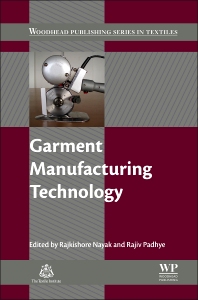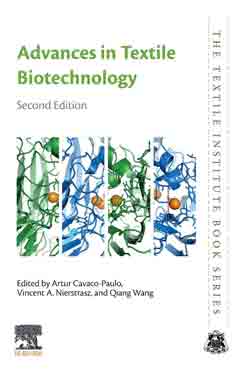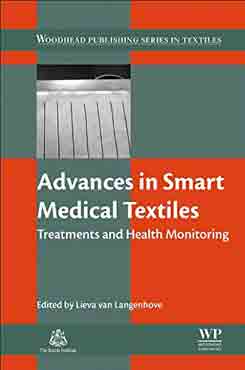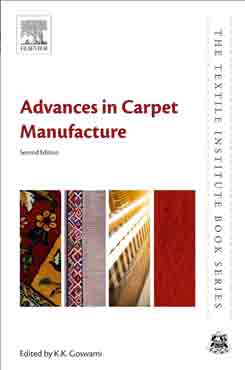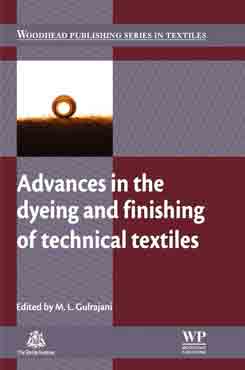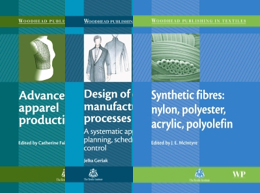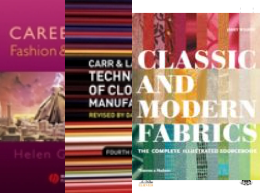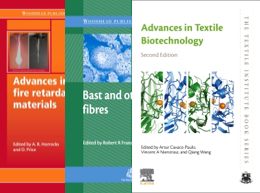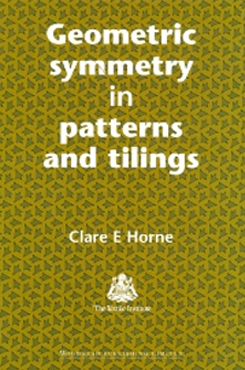Description
Garment Manufacturing Technology provides an insiders’ look at this multifaceted process, systematically going from design and production to finishing and quality control. As technological improvements are transforming all aspects of garment manufacturing allowing manufacturers to meet the growing demand for greater productivity and flexibility, the text discusses necessary information on product development, production planning, and material selection. Subsequent chapters covers garment design, including computer-aided design (CAD), advances in spreading, cutting and sewing, and new technologies, including alternative joining techniques and seamless garment construction. Garment finishing, quality control, and care-labelling are also presented and explored.
Key Features
- Provides an insiders look at garment manufacturing from design and production to finishing and quality control
- Discusses necessary information on product development, production planning, and material selection
- Includes discussions of computer-aided design (CAD), advances in spreading, cutting and sewing, and new technologies, including alternative joining techniques and seamless garment construction
- Explores garment finishing, quality control, and care labelling
Readership
R&D managers in the textile industry, postgraduate students and academic researchers in textile science
Table of Contents
-
- 1. Introduction: the apparel industry
- 1.1. Introduction
- 1.2. Global scenario of apparel manufacturing
- 1.3. Challenges in apparel production
- 1.4. Role of various organisations
- 1.5. Future trends
- 1.6. Conclusions
- Part One. Product development, production planning and selection of materials
- 2. Product development in the apparel industry
- 2.1. Introduction
- 2.2. Product-development models and product-development process
- 2.3. Variations in apparel product development: demand-led product development
- 2.4. Apparel product-development technologies
- 2.5. Apparel product standards, specifications, quality assurance and product technical package
- 2.6. Apparel product life-cycle management (PLM) and supply-chain relationships
- 2.7. Measures for apparel product development
- 2.8. Future trends in apparel product development
- 2.9. Case studies: PD tools and technologies
- 2.10. Conclusions
- 2.11. Sources of further information and advice
- 3. Role of fabric properties in the clothing-manufacturing process
- 3.1. Introduction
- 3.2. Fabric properties and performance
- 3.3. Garment make-up process and fabric properties
- 3.4. Low-stress mechanical properties and make-up process
- 3.5. Control system
- 3.6. Fabric tailorability, buckling and formability
- 3.7. Sewability
- 3.8. Conclusions
- 4. Production planning in the apparel industry
- 4.1. Introduction
- 4.2. Production planning
- 4.3. Production systems
- 4.4. Production planning and control in the apparel industry
- 4.5. Supply chain management in the apparel industry
- 4.6. Inventory management
- 4.7. Manufacturing performance improvement through lean production
- 4.8. Waste management
- 4.9. Human resource management
- 4.10. New tools developed in production planning
- 5. Fabric sourcing and selection
- 5.1. Introduction
- 5.2. Fabric sourcing
- 5.3. Fabric inspection
- 5.4. Future trends
- 5.5. Conclusions
- 6. Selecting garment accessories, trims, and closures
- 6.1. Part 1: introduction to garment accessories
- 6.2. Part 2: selecting garment accessories
- 6.3. Part 3: selecting supporting materials
- 6.4. Part 4: selecting closures
- 6.5. Part 5: accessories for children’s wear
- 6.6. Part 6: evaluation of quality of trims and accessories
- 6.7. Part 7: fashion accessories
- 6.8. Conclusions
- 2. Product development in the apparel industry
- Part Two. Garment design and production
- 7. Garment sizing and fit
- 7.1. Introduction
- 7.2. Geometry of the human form
- 7.3. The human figure divided into body proportions
- 7.4. Garment size charts
- 7.5. Development of garment size charts
- 7.6. Sizing and fit systems
- 7.7. Three-dimensional (3D) body scanning – current and potential future applications in clothing manufacture and retailing
- 7.8. Conclusions
- 7.9. Sources of further information
- 8. Pattern construction
- 8.1. Introduction
- 8.2. Pattern construction modes
- 8.3. Body, material and design
- 8.4. Pattern construction tools
- 8.5. Conclusions
- 8.6. 2D and 3D CAD Web sites
- 9. Fabric spreading and cutting
- 9.1. Introduction
- 9.2. Cut process planning
- 9.3. Spreading of textile materials
- 9.4. Cutting of textile materials
- 9.5. Fusing of cut textile components
- 9.6. Final work operations of the cutting process
- 9.7. Future trends
- 9.8. Conclusions
- 10. Sewing, stitches and seams
- 10.1. Introduction
- 10.2. Stitch classes
- 10.3. Seam types
- 10.4. Seam-neatening
- 10.5. Future trends
- 10.6. Conclusions
- 10.7. Sources of further information and advice
- 11. Sewing equipment and work aids
- 11.1. Introduction
- 11.2. Different bed types in industrial sewing machines
- 11.3. Different feed types in industrial sewing machines
- 11.4. Cyclic sewing machines
- 11.5. Computerised sewing machines
- 11.6. Work aids
- 11.7. Sewing automats
- 11.8. Sewing needles
- 11.9. Sewing threads
- 11.10. Future trends and conclusions
- 11.11. Sources of further information and advice
- 12. Sewing-room problems and solutions
- 12.1. Introduction
- 12.2. Seam pucker and other surface distortions
- 12.3. Sewing defects caused by needles
- 12.4. Material feeding and associated problems
- 12.5. Problems in stitch formation
- 12.6. Thread breakage
- 12.7. Future trends
- 12.8. Conclusions
- 12.9. Sources of further information and advice
- 13. Alternative fabric-joining technologies
- 13.1. Alternatives to sewing
- 13.2. Adhesive bonding
- 13.3. Conventional thermal welding
- 13.4. Advanced thermal-welding processes
- 13.5. Conclusions
- 14. Seamless garments
- 14.1. Introduction
- 14.2. Seamless technique
- 14.3. Common seamless products
- 14.4. Raw materials
- 14.5. Seamless knitting machines
- 14.6. Advantages of seamless garments
- 14.7. Disadvantages of seamless garments
- 14.8. Applications of seamless garments
- 14.9. Future developments
- 14.10. Conclusions
- 7. Garment sizing and fit
- Part Three. Garment finishing, quality control, care labelling and costing
- 15. Garment-finishing techniques
- 15.1. Introduction
- 15.2. Garment finishing for functionality
- 15.3. Knitwear finishing
- 15.4. Denim garment finishing
- 15.5. Pressing (factors and equipment)
- 15.6. Future trends
- 15.7. Conclusions
- 16. Quality control and quality assurance in the apparel industry
- 16.1. Introduction
- 16.2. Quality control in the apparel industry
- 16.3. Future trends
- 16.4. Conclusions
- 16.5. Sources of further information and advice
- 17. Care labelling of clothing
- 17.1. Introduction
- 17.2. Requirements of care labelling
- 17.3. Definition of care label
- 17.4. Care labelling systems
- 17.5. Future trends
- 17.6. Conclusions
- 18. Garment costing
- 18.1. Introduction
- 18.2. Costing need
- 18.3. Cost classification
- 18.4. Cost elements
- 18.5. Measures of efficiency
- 18.6. Profitability
- 18.7. Garment sales element analysis
- 18.8. Mark-downs
- 18.9. Managing cost through inventory control
- 18.10. Apparel costing sheet analysis
- 18.11. Conclusions
- 15. Garment-finishing techniques
- Index
- 1. Introduction: the apparel industry
